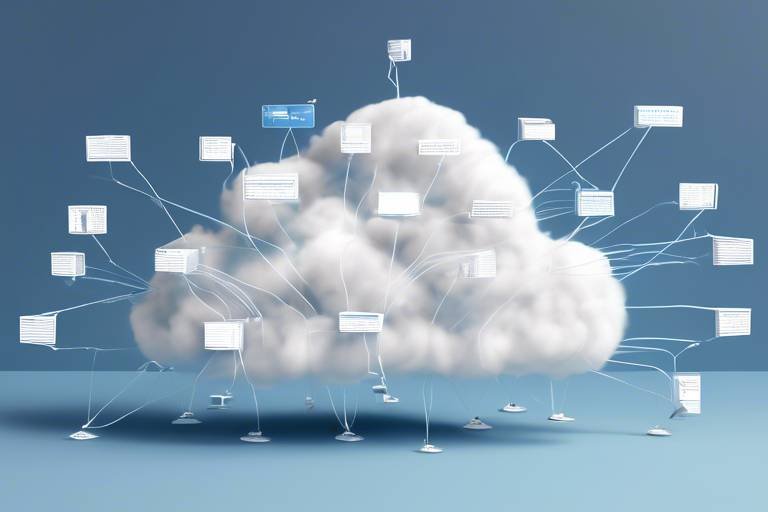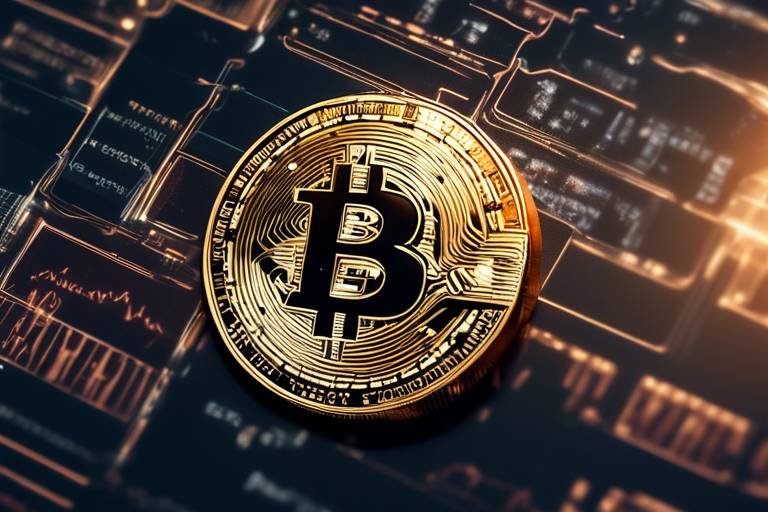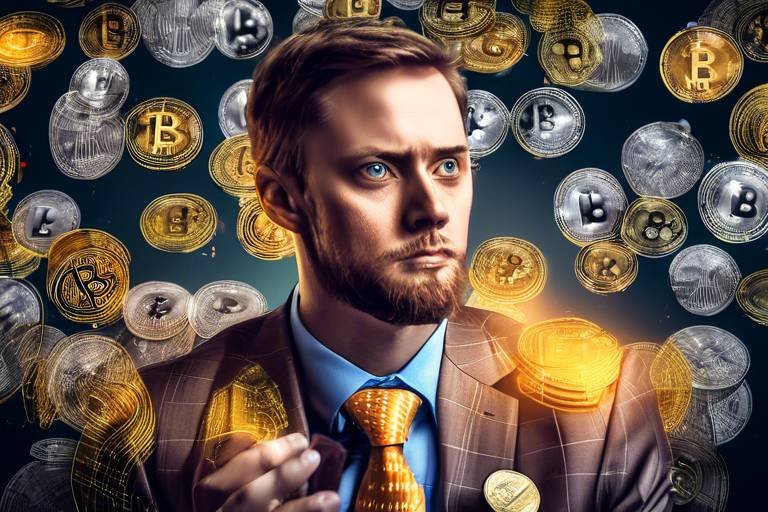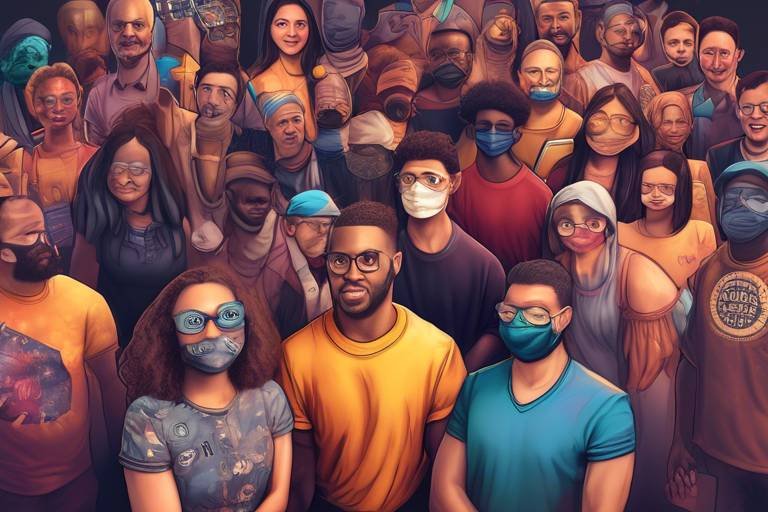NFTs - Beyond Art and Collectibles
In recent years, the world has witnessed a remarkable shift in how we perceive ownership and value, primarily driven by the rise of Non-Fungible Tokens (NFTs). Initially, these digital assets were primarily associated with art and collectibles, captivating the imaginations of artists, collectors, and investors alike. However, as we delve deeper into the realm of NFTs, it becomes evident that their potential extends far beyond these traditional boundaries. From revolutionizing industries like gaming and real estate to transforming music and entertainment, NFTs are paving the way for a future where digital ownership is not just a concept but a tangible reality.
So, what exactly are NFTs? At their core, NFTs are unique digital tokens that exist on a blockchain, which means they cannot be replicated or exchanged on a one-to-one basis like cryptocurrencies such as Bitcoin or Ethereum. This uniqueness is what makes NFTs so appealing; they provide proof of ownership and authenticity for digital assets, whether it's a piece of art, a virtual real estate plot, or a music album. As we explore the multifaceted applications of NFTs, we’ll uncover how these digital tokens are set to redefine our understanding of ownership across various sectors.
The transformative potential of NFTs is not just limited to the digital art world, although that has certainly been a significant starting point. Imagine a future where you can own a fraction of a skyscraper through an NFT, or where your favorite video game characters can be traded as unique assets. The possibilities are as vast as our imaginations, and they invite us to rethink how we engage with both digital and physical assets. As we embark on this exploration, we will examine the various industries that are embracing NFTs, the benefits they offer, and the challenges that lie ahead.
In conclusion, the journey of NFTs is just beginning. As we continue to witness their evolution, it’s clear that they hold the potential to disrupt traditional models of ownership and value. By understanding and embracing this technology, we can unlock new opportunities that will shape the future of commerce, creativity, and community.
- What are NFTs? NFTs are unique digital assets verified using blockchain technology, providing proof of ownership for various digital and physical items.
- How do NFTs differ from cryptocurrencies? Unlike cryptocurrencies, which are fungible and can be exchanged for one another, NFTs are unique and cannot be exchanged on a one-to-one basis.
- What industries are using NFTs? NFTs are being utilized in various industries, including gaming, real estate, music, and entertainment, transforming how we perceive ownership and value.
- Are NFTs environmentally friendly? The environmental impact of NFTs is a topic of discussion, particularly regarding the energy consumption of blockchain networks. However, many are exploring more sustainable solutions.
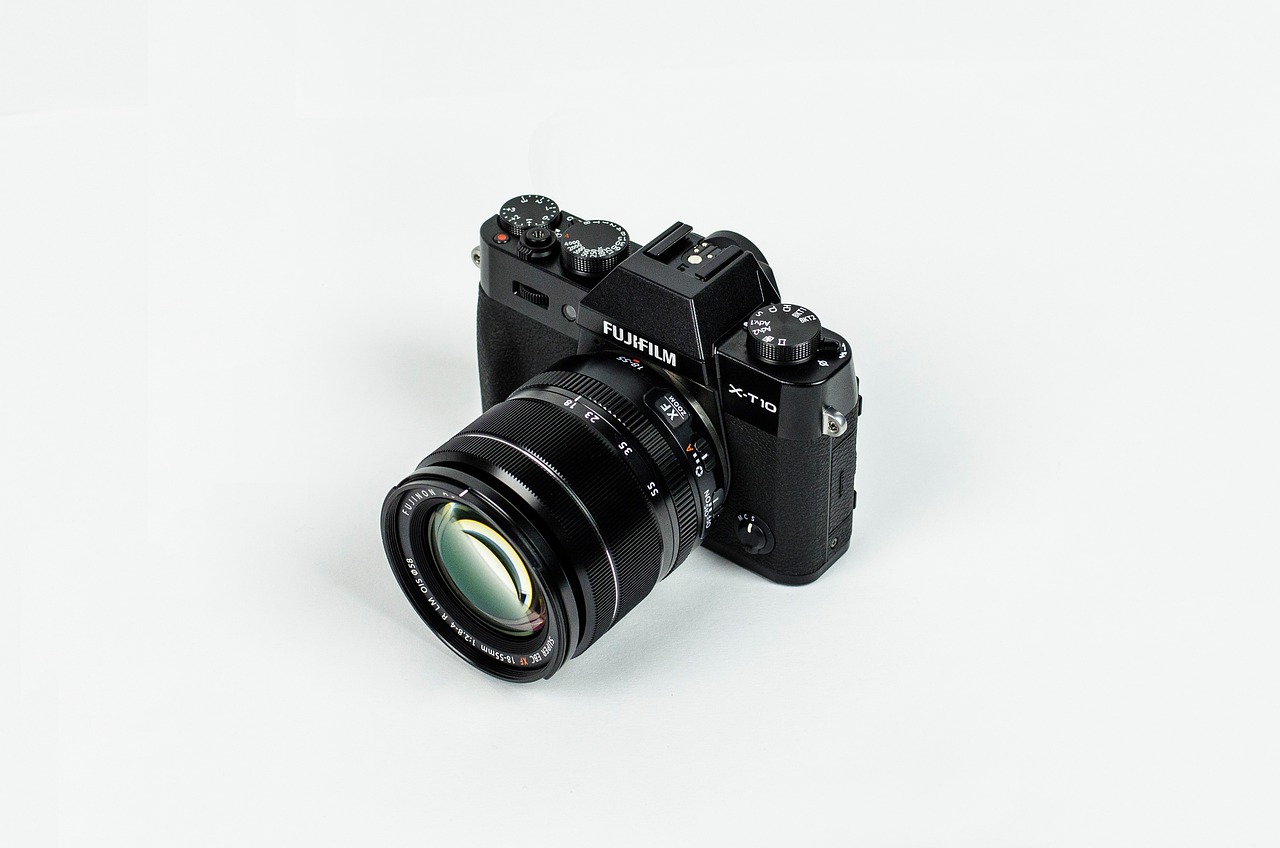
[Understanding NFTs]
Non-Fungible Tokens, or NFTs, have taken the digital world by storm, capturing the imagination of artists, gamers, and investors alike. But what exactly are they? At their core, NFTs are unique digital assets that represent ownership of a specific item or piece of content on the blockchain. Unlike cryptocurrencies such as Bitcoin or Ethereum, which are fungible and can be exchanged for one another, NFTs are one-of-a-kind. Each token holds distinct information that makes it impossible to replicate, thereby ensuring its uniqueness and scarcity.
The technology behind NFTs is based on blockchain, a decentralized digital ledger that records transactions across many computers. This ensures that the ownership and transaction history of each NFT is transparent and secure. When you purchase an NFT, you're not just buying a digital file; you're acquiring a verifiable certificate of authenticity that proves your ownership of that particular asset. This has opened up a whole new realm of possibilities for artists, musicians, and creators, allowing them to monetize their work in innovative ways.
So, how do NFTs differ from other digital assets? Here’s a quick breakdown:
| Feature | Fungible Tokens | Non-Fungible Tokens (NFTs) |
|---|---|---|
| Uniqueness | Identical and interchangeable | Unique and non-interchangeable |
| Ownership | Ownership is easily transferable | Ownership is tied to a specific token |
| Examples | Cryptocurrencies like Bitcoin | Digital art, music, virtual real estate |
In essence, NFTs are redefining the concept of ownership in the digital realm. Just like owning a rare painting or a limited edition collectible in the physical world, owning an NFT gives you a piece of digital history. This has significant implications across various sectors, from art and gaming to real estate and entertainment. As we delve deeper into the world of NFTs, we’ll uncover the myriad ways they are transforming industries and how they can benefit both creators and consumers.
Moreover, the potential for NFTs extends beyond mere ownership. They can also encapsulate smart contracts, which are self-executing contracts with the terms of the agreement directly written into code. This means that creators can set conditions for their NFTs, such as receiving a percentage of sales every time their work changes hands. This creates a sustainable model for artists and ensures they continue to benefit from their creations long after the initial sale.
In summary, understanding NFTs is crucial for anyone looking to navigate the evolving landscape of digital ownership. They represent a shift in how we perceive value and ownership in the digital age, fostering a new economy where creators can thrive and consumers can engage in unique ways. As we continue to explore the applications of NFTs in various industries, it becomes increasingly clear that their impact is just beginning to unfold.
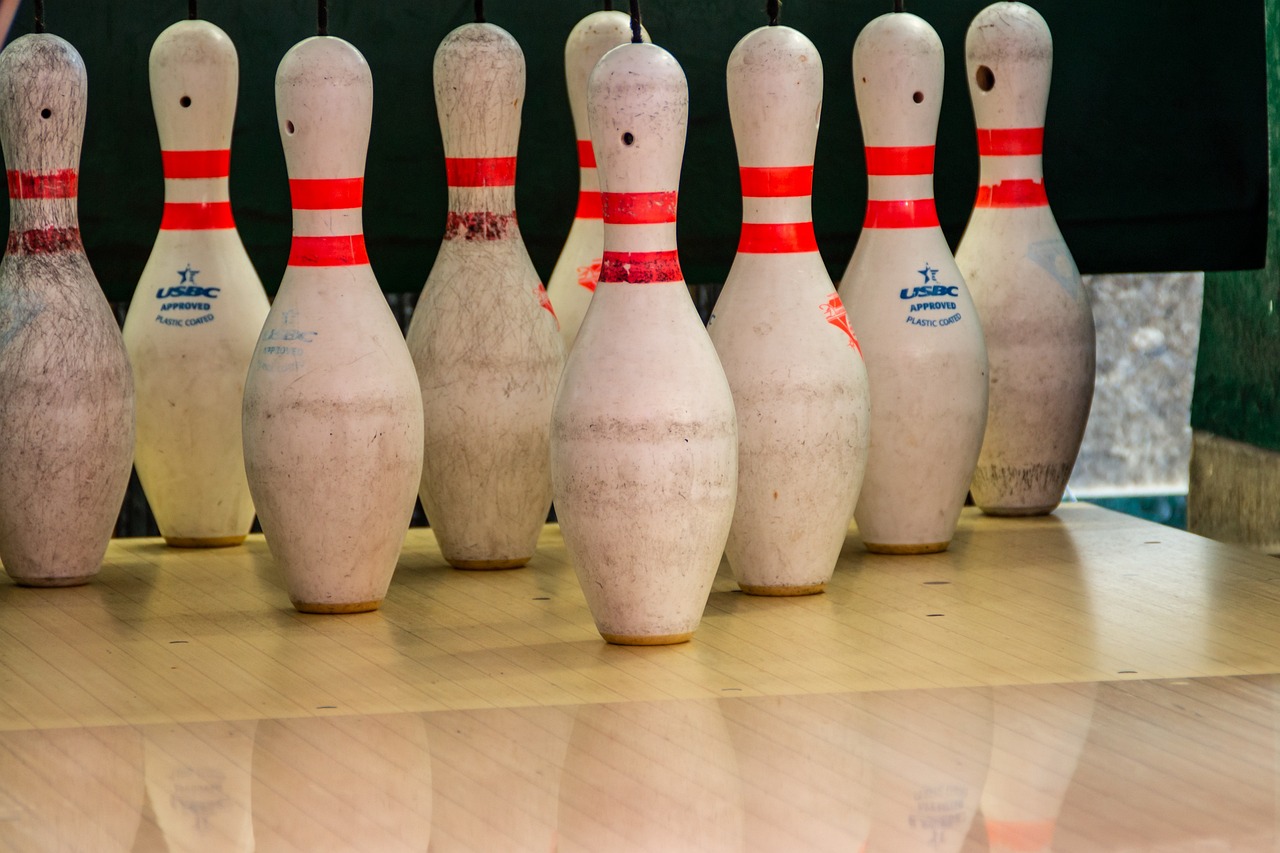
[NFTs in Gaming]
When you think about gaming, what comes to mind? Epic battles, immersive worlds, and the thrill of leveling up, right? But what if I told you that NFTs, or Non-Fungible Tokens, are set to revolutionize this experience even further? Imagine a world where you truly own your in-game assets, where your hard-earned gear, skins, or collectibles aren't just pixels on a screen but actual digital property you can buy, sell, or trade at will. This is the exciting landscape that NFTs are creating in the gaming industry, and it’s not just a passing trend; it’s a fundamental shift in how we perceive ownership in virtual environments.
The integration of NFTs in gaming is akin to giving players a key to a treasure chest. In traditional gaming, players invest countless hours into acquiring items, only to find that they have no real ownership over them once the game servers shut down or the publisher decides to discontinue the game. With NFTs, each item is secured on the blockchain, providing proof of ownership that is immutable and transparent. This not only enhances the player's experience but also opens up new economic avenues for both developers and gamers.
One of the most thrilling aspects of NFTs in gaming is the emergence of play-to-earn models. These models allow players to earn real-world value through their gameplay. For instance, players can complete quests, win battles, or create unique content, all of which can be tokenized and sold on various marketplaces. Think of it like this: instead of just playing for fun, you’re also building a portfolio of digital assets that can appreciate in value over time. This shift is changing the dynamics of traditional gaming economics, where previously, players were merely consumers.
Play-to-earn models are not just a gimmick; they represent a new paradigm in gaming. Players can generate income while enjoying their favorite games, which adds a layer of excitement and motivation. Imagine grinding through a game, not just for the joy of it, but also because you know that your efforts could pay off in real cash. This model is particularly popular in games like Axie Infinity, where players breed, raise, and battle creatures called Axies, earning tokens that can be converted into real money. It’s a game-changer, literally!
Let’s dive into some successful examples of NFT integration in gaming. One standout is Gods Unchained, a trading card game that allows players to own their cards as NFTs. Players can buy, sell, and trade their cards on secondary markets, creating a thriving economy around the game. Another example is Decentraland, a virtual reality platform where users can purchase land, build on it, and monetize their creations. These games not only enhance player engagement but also foster community-driven economies, where players have a stake in the success of the ecosystem.
However, it’s not all sunshine and rainbows. The implementation of NFTs in gaming does come with its challenges. Accessibility is a significant concern; not all players are familiar with blockchain technology or how to acquire NFTs. Additionally, there are environmental concerns related to energy consumption in blockchain transactions, which can deter some players from participating. Finally, the sustainability of NFT-based economies is still up for debate. Will these economies thrive long-term, or will they burst like a bubble? Only time will tell.
In conclusion, NFTs are not just a fad; they are paving the way for a new era in gaming. The potential to truly own your in-game assets, coupled with the ability to earn real-world value, is a tantalizing prospect that could redefine the gaming landscape. As developers continue to innovate and address the challenges, we’re bound to see even more exciting developments in this space. So, whether you're a hardcore gamer or a curious onlooker, keep your eyes peeled—NFTs are here to stay!
- What are NFTs? NFTs are unique digital assets verified using blockchain technology, making them distinct from other digital assets.
- How do NFTs work in gaming? NFTs allow players to truly own in-game assets, which can be bought, sold, or traded on various marketplaces.
- Can I earn money through NFTs in gaming? Yes, play-to-earn models enable players to earn real-world value through their gameplay.
- What are some challenges of NFTs in gaming? Accessibility, environmental concerns, and sustainability of NFT economies are significant challenges.
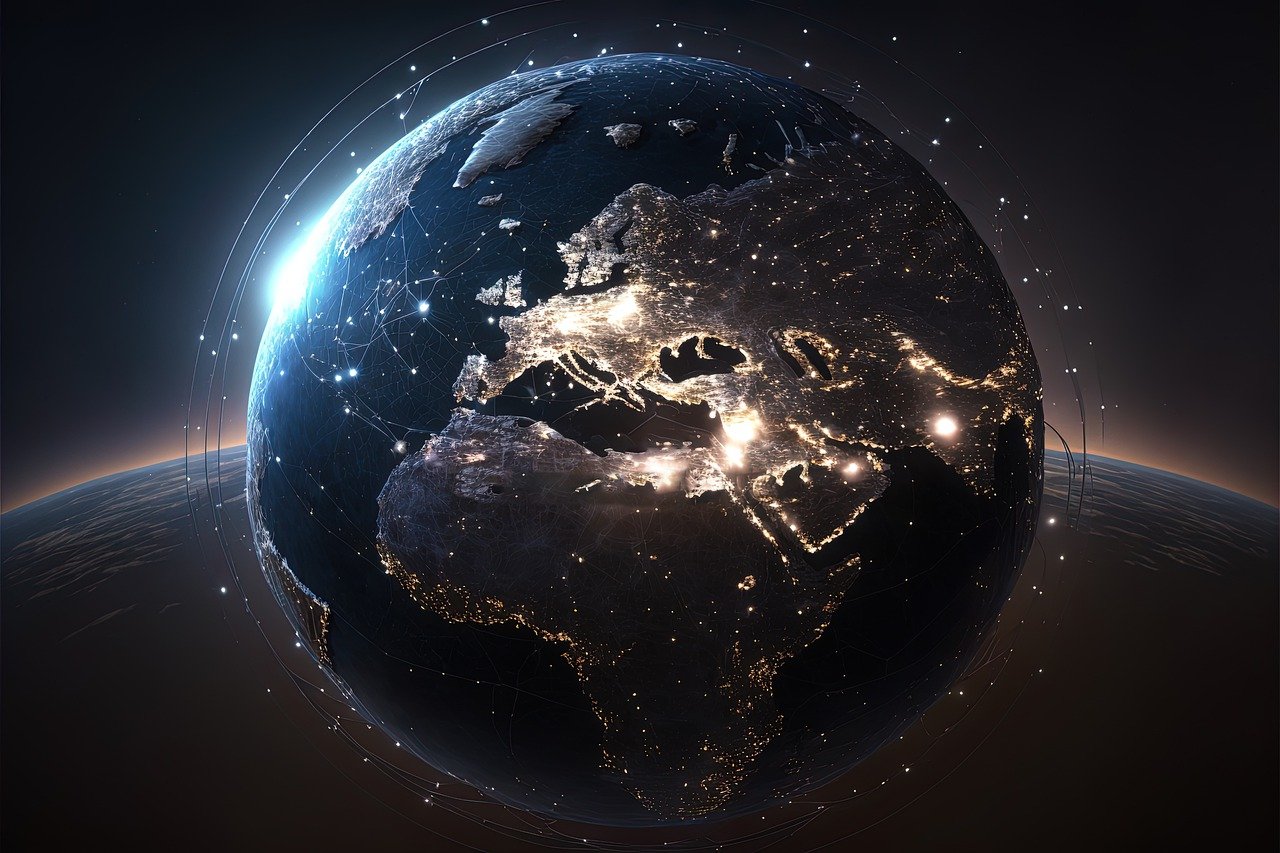
[Play-to-Earn Models]
In recent years, the gaming landscape has undergone a significant transformation, largely due to the emergence of play-to-earn (P2E) models powered by NFTs. Unlike traditional gaming, where players invest time and money without any tangible returns, P2E games allow players to earn real-world value through their in-game activities. Imagine spending countless hours leveling up your character in a video game, only to realize that the time spent could actually translate into financial gain. This is the essence of play-to-earn gaming, where players can earn NFTs, cryptocurrencies, or other digital assets that hold real monetary value.
At the heart of P2E models is the concept of digital ownership. In traditional gaming, players often feel like they are merely renting their in-game assets, as these items are tied to centralized servers and can be taken away at any moment. However, with NFTs, players truly own their assets. This ownership is secured by blockchain technology, which ensures that each item is unique and cannot be duplicated. As a result, players can trade, sell, or even use their assets across different games, fostering a sense of autonomy and value in their gaming experience.
Moreover, the P2E model creates new revenue streams not only for players but also for game developers. By integrating NFTs, developers can implement mechanisms that allow them to earn a percentage of secondary sales, creating a sustainable income model. For instance, when a player sells an NFT they earned in-game, the original developer can receive a royalty fee. This innovative approach not only incentivizes developers to create engaging content but also ensures they benefit from the ongoing success of their games.
However, the rise of play-to-earn gaming is not without its challenges. While the concept is exciting, it raises questions about accessibility and fairness. Not every player has the same resources to invest in NFTs or the time to engage deeply with these games. Additionally, environmental concerns associated with blockchain technology cannot be ignored. As the demand for NFTs grows, so does the energy consumption required for transactions, leading to debates about the sustainability of such models.
To illustrate the impact of play-to-earn models, consider a few successful examples:
| Game | Platform | Key Features |
|---|---|---|
| Axie Infinity | PC, Mobile | Players earn tokens by battling, breeding, and trading creatures called Axies. |
| Decentraland | Web | A virtual world where players can buy, sell, and build on land using NFTs. |
| Gods Unchained | PC | A trading card game where players own their cards as NFTs and can trade them freely. |
As we look to the future, the play-to-earn model appears to be a game-changer in the industry. It not only empowers players but also encourages developers to innovate and create immersive experiences. While challenges remain, the potential for a more equitable and rewarding gaming ecosystem is tantalizing. So, are you ready to dive into this new world of gaming where your skills could translate into real-world rewards?
- What are play-to-earn games? - These are games that allow players to earn real-world value, typically through cryptocurrency or NFTs, based on their in-game activities.
- How do NFTs work in gaming? - NFTs represent unique in-game assets that players can own, trade, and sell, secured by blockchain technology.
- Are play-to-earn models sustainable? - While they offer exciting opportunities, sustainability concerns, particularly regarding environmental impact and accessibility, are ongoing discussions in the gaming community.

[Case Studies]
When it comes to the integration of NFTs in gaming, several case studies stand out, showcasing the transformative potential of these digital assets. One of the most prominent examples is Axie Infinity, a blockchain-based game that allows players to collect, breed, and battle cute creatures called Axies. Each Axie is an NFT, giving players true ownership of their in-game assets. This ownership model has not only created a vibrant marketplace for Axies but has also enabled players to earn real income through gameplay, fundamentally altering the economics of gaming.
Another notable case is Decentraland, a virtual reality platform where users can buy, sell, and develop parcels of land, all represented as NFTs. This platform has turned digital real estate into a lucrative venture, allowing players to construct their own experiences and monetize them. The success of Decentraland highlights how NFTs can create a new layer of engagement and investment in gaming, where players are no longer just participants, but also stakeholders in a broader economy.
Moreover, Gods Unchained has made waves in the trading card game genre by incorporating NFTs to represent cards. Players can trade their cards in a marketplace, ensuring that they have real value beyond the game itself. This model not only enhances player engagement but also fosters a sense of community as participants can build their decks with unique assets that they truly own.
These case studies illustrate a key trend in the gaming industry: the shift from traditional ownership models to a more decentralized approach where players have a stake in their virtual worlds. However, the implementation of NFTs in gaming is not without its challenges. Issues such as accessibility and environmental concerns must be addressed to ensure that this innovative approach is sustainable in the long run. As we look to the future, the integration of NFTs in gaming will likely continue to evolve, with new models and platforms emerging to enhance player experiences and drive engagement.
- What are NFTs? NFTs, or Non-Fungible Tokens, are unique digital assets verified using blockchain technology, which makes them distinct and not interchangeable.
- How do NFTs work in gaming? NFTs allow players to own in-game assets, such as characters or items, which can be bought, sold, or traded on various marketplaces.
- Are NFTs environmentally friendly? There are ongoing discussions about the environmental impact of NFTs, particularly regarding the energy consumption of blockchain networks. However, many are exploring more sustainable solutions.
- Can anyone create an NFT? Yes, anyone can create an NFT, but the process typically involves using a blockchain platform and understanding the associated costs and technical requirements.
- What is the future of NFTs in gaming? The future of NFTs in gaming looks promising, with potential for new economic models, enhanced player engagement, and innovative gameplay experiences.
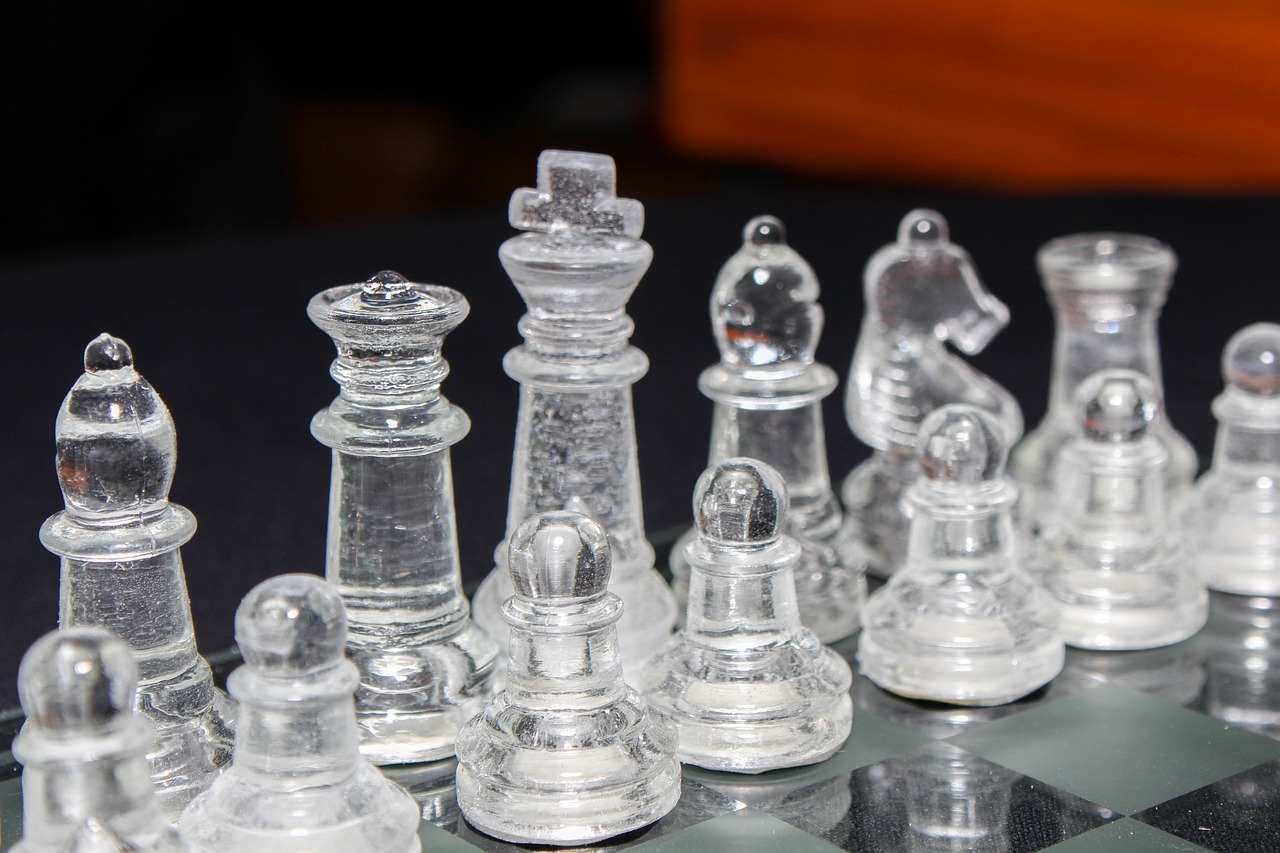
[Challenges in Gaming]
The integration of NFTs into the gaming industry is undoubtedly exciting, but it also comes with its fair share of challenges and criticisms. One of the primary concerns is accessibility. Not all players have the financial means to invest in NFTs, which can create a divide between those who can afford to participate in these new digital economies and those who cannot. Imagine a vibrant gaming world where some players flaunt their unique digital assets while others are left behind, unable to join in on the fun. This disparity can lead to feelings of exclusion and frustration within the gaming community.
Another significant issue is the environmental impact associated with blockchain technologies, particularly those that rely on energy-intensive proof-of-work systems. The energy consumption required to mint and trade NFTs has raised eyebrows among environmental advocates. Critics argue that the carbon footprint of NFTs could contribute to climate change, sparking a heated debate about the sustainability of this burgeoning market. As gamers become more conscious of their ecological footprint, developers will need to find ways to mitigate these concerns.
Furthermore, the sustainability of NFT-based economies poses a challenge. The hype surrounding NFTs can lead to speculative bubbles, where the value of digital assets skyrockets, only to plummet later. This volatility can create uncertainty for both players and developers alike. For instance, a game that relies heavily on NFT sales for revenue may find itself in a precarious situation if the market crashes. How can developers ensure that their games remain financially viable in such an unpredictable landscape?
There are also concerns regarding security and fraud. While blockchain technology is often touted for its security features, the reality is that scams and hacks are not uncommon. Players may find themselves victims of phishing attacks or fraudulent NFT sales, leading to significant financial losses. The need for robust security measures and education within the gaming community is paramount to safeguard players' investments.
In addition to these challenges, the regulatory landscape surrounding NFTs in gaming is still evolving. Governments around the world are grappling with how to classify and regulate digital assets. This uncertainty can create a sense of apprehension for developers and players alike, as changes in legislation could impact the viability of NFT-based games. Developers must stay informed and adaptable to navigate this shifting terrain.
In summary, while NFTs offer exciting possibilities for the gaming industry, they also bring forth a range of challenges that must be addressed. From accessibility and environmental concerns to security issues and regulatory uncertainties, the road ahead is complex. Developers and players alike must work together to overcome these hurdles and create a gaming ecosystem that is not only innovative but also inclusive and sustainable.
- What are NFTs in gaming? NFTs in gaming are unique digital assets that represent ownership of in-game items, characters, or experiences, allowing players to buy, sell, and trade them.
- How do NFTs enhance player experiences? NFTs enhance player experiences by providing true ownership of digital assets, enabling players to engage in player-driven economies and enjoy unique collectibles.
- What are the environmental concerns associated with NFTs? The environmental concerns stem from the energy-intensive processes required to create and trade NFTs, particularly on blockchain networks using proof-of-work.
- Can NFTs be hacked? Yes, while blockchain technology is secure, scams and hacks can occur, so players must be cautious and informed about security practices.
- How do regulatory issues affect NFTs in gaming? Regulatory issues can create uncertainty for developers and players, as laws governing digital assets are still being established and can impact the viability of NFT-based games.

[NFTs in Real Estate]
When you think of real estate, the first thing that might come to mind is the traditional process of buying and selling properties, which often involves mountains of paperwork, lengthy negotiations, and sometimes even a bit of guesswork. But what if I told you that Non-Fungible Tokens (NFTs) are shaking up this age-old industry? Yes, you heard it right! NFTs are not just for digital art or collectibles; they are paving the way for a new era in real estate transactions.
Imagine a world where buying a house is as simple as clicking a button. NFTs provide a unique digital representation of ownership that is stored on the blockchain, ensuring that every transaction is transparent, secure, and verifiable. This means that when you purchase a property represented by an NFT, you can be confident that you are getting the real deal. No more shady dealings or hidden agendas—just straightforward ownership.
One of the most exciting applications of NFTs in real estate is the concept of fractional ownership. Traditionally, investing in real estate required substantial capital, often putting it out of reach for many aspiring investors. However, with NFTs, multiple investors can own a fraction of a property, represented by their own unique tokens. This democratizes access to real estate investments and opens the door for a broader range of people to participate in the market.
Moreover, NFTs streamline the process of property transactions. With smart contracts—self-executing contracts with the terms of the agreement directly written into code—buying and selling properties can be automated. This reduces the need for intermediaries, such as real estate agents and lawyers, saving time and money for all parties involved. Imagine the efficiency of being able to close a deal within minutes instead of weeks!
However, the integration of NFTs in real estate is not without its challenges. There are still regulatory hurdles to overcome, as governments worldwide grapple with how to classify and regulate these digital assets. Additionally, educating both buyers and sellers about this new technology is crucial for its widespread acceptance. It's a bit like learning to ride a bike; once you get the hang of it, you’ll wonder how you ever managed without it!
Let's take a look at some of the key benefits of using NFTs in real estate:
- Transparency: Every transaction is recorded on the blockchain, providing a clear history of ownership.
- Security: The decentralized nature of blockchain technology makes it highly resistant to fraud.
- Liquidity: NFTs can be easily bought and sold on various platforms, increasing the liquidity of real estate assets.
- Accessibility: Fractional ownership allows more people to invest in real estate, opening up new opportunities.
As we move forward, the potential for NFTs in real estate is enormous. They could redefine how we think about property ownership and investment. With ongoing advancements in technology and a growing acceptance of digital assets, it's only a matter of time before NFTs become a standard practice in the real estate market.
- What are NFTs? NFTs, or Non-Fungible Tokens, are unique digital assets that represent ownership of a specific item or piece of content on the blockchain.
- How do NFTs work in real estate? NFTs can represent ownership of real estate properties, allowing for secure and transparent transactions, as well as fractional ownership opportunities.
- Are NFTs safe for real estate transactions? Yes, NFTs utilize blockchain technology, which is highly secure and resistant to fraud, making them a safe option for real estate transactions.
- What are the benefits of using NFTs in real estate? Benefits include increased transparency, security, liquidity, and accessibility for investors.

[NFTs in Music and Entertainment]
In the ever-evolving landscape of music and entertainment, NFTs are emerging as a game-changer, revolutionizing how artists connect with their fans and monetize their work. Imagine being able to own a piece of your favorite artist's work, not just as a digital file, but as a unique token that represents true ownership. This is the magic of NFTs! They enable musicians and entertainers to bypass traditional industry barriers, allowing for direct engagement with their audience.
One of the most exciting aspects of NFTs is their ability to create new revenue models. Artists can sell their music, art, or even exclusive experiences directly to fans without the need for intermediaries like record labels or streaming platforms. This means that a larger share of the profits go directly to the creators, fostering a more sustainable ecosystem. For instance, musicians can release limited edition albums or exclusive tracks as NFTs, creating a sense of scarcity that drives demand. Imagine owning a limited edition track from your favorite band, complete with unique artwork and behind-the-scenes content!
Moreover, NFTs facilitate fan engagement in innovative ways. Artists can offer token holders exclusive access to concerts, meet-and-greets, or even personalized messages. This deepens the connection between creators and their fans, transforming passive listeners into active participants in the artist's journey. For example, an artist might issue NFTs that grant holders VIP access to a live performance or special backstage content, creating a community of dedicated supporters who feel a personal connection to the artist.
Another significant benefit of NFTs in the music industry is the potential for ongoing royalties and control over intellectual property. With traditional music distribution, artists often see only a fraction of the revenue generated from their work. However, NFTs can be programmed to ensure that artists receive a percentage of sales every time their work is resold. This means that as their popularity grows, so does their income. It's like having a financial safety net that continues to provide returns long after the initial sale!
In addition to music, NFTs are also making waves in the broader entertainment industry. Filmmakers and content creators are exploring the use of NFTs to fund projects, offering exclusive content or early access to backers. This not only provides a new funding avenue but also creates a dedicated fanbase that feels invested in the project’s success. Imagine being able to support an indie film and receive exclusive behind-the-scenes access or even a role in the movie as part of your NFT purchase! The possibilities are endless.
As we look to the future, the integration of NFTs in music and entertainment is likely to expand even further. While there are challenges to navigate, such as environmental concerns and the need for broader adoption, the potential benefits are too significant to ignore. Artists are finding new ways to express themselves, connect with their fans, and monetize their creations in ways that were previously unimaginable.
In conclusion, NFTs are not just a passing trend; they represent a fundamental shift in how we think about ownership, value, and engagement in the music and entertainment industries. As artists continue to embrace this technology, we can expect to see even more innovative uses that redefine our experience as fans and consumers. So, whether you're a die-hard music lover or a casual listener, keep your eyes peeled for the exciting developments in the world of NFTs!
- What are NFTs? NFTs, or Non-Fungible Tokens, are unique digital assets verified using blockchain technology, representing ownership of a specific item or piece of content.
- How do NFTs benefit artists? NFTs allow artists to sell their work directly to fans, retain a larger share of the profits, and earn ongoing royalties from resale.
- What kind of content can be turned into an NFT? Almost any digital content can be turned into an NFT, including music tracks, artwork, videos, and even virtual experiences.
- Are NFTs environmentally friendly? The environmental impact of NFTs is a topic of debate, as the energy consumption of blockchain technology can be significant. However, many platforms are working on more sustainable solutions.
- How can fans engage with their favorite artists through NFTs? Fans can engage by purchasing NFTs that offer exclusive content, experiences, or rights, thereby deepening their connection with the artists.

[Fan Engagement]
In the ever-evolving landscape of music and entertainment, NFTs are redefining how artists connect with their fans. Imagine a world where you can own a piece of your favorite artist's work—be it a unique song, an exclusive video, or even a backstage pass to a concert. This is not just a dream; it's happening right now! With NFTs, artists have the opportunity to create exclusive content that is directly tied to their fanbase, fostering a deeper sense of community and engagement.
One of the most exciting aspects of NFTs is their ability to offer fans unique experiences that go beyond traditional consumption. For instance, artists can mint limited edition NFTs that grant holders access to special events, private listening parties, or even personal interactions. This concept is akin to having a VIP pass that not only allows you to enjoy the music but also to engage with the artist on a personal level. The feeling of exclusivity and connection is unparalleled, transforming passive listeners into active participants in an artist's journey.
Moreover, NFTs enable artists to cultivate a community around their work. By issuing tokens that represent ownership of specific pieces, artists can create a sense of belonging among their fans. For example, owning an NFT could mean being part of a select group that gets to vote on the direction of an upcoming album or participate in exclusive Q&A sessions. This level of engagement is revolutionary, as it empowers fans to have a say in the creative process, making them feel valued and appreciated.
But how does this work in practice? Let’s take a look at a few examples:
- Exclusive Releases: Artists can release new tracks or albums as NFTs, giving fans the chance to own a unique digital copy.
- Interactive Experiences: Some artists offer virtual meet-and-greets or behind-the-scenes content exclusively to NFT holders.
- Community Voting: NFT owners can vote on aspects of an artist’s work, such as cover art or setlists for upcoming shows.
Furthermore, the use of NFTs can also enhance fan loyalty. When fans feel that they have a stake in an artist's success, they are more likely to support them through merchandise purchases, ticket sales, and social media promotion. This relationship is mutually beneficial: artists gain dedicated supporters, while fans enjoy a richer and more rewarding experience. It’s like being part of a club where everyone shares a passion for the same music, and the artist appreciates their contribution.
However, it’s essential to acknowledge that this new model of engagement also comes with its challenges. Not every fan may have the means or knowledge to invest in NFTs, which could create a divide within the fanbase. Artists must strive to ensure that their NFT offerings are accessible and inclusive, allowing all fans to participate in some capacity. After all, the goal is to build a community, not to alienate those who may not fully understand or afford the technology.
As we look to the future, it’s clear that NFTs are not just a passing trend; they are a transformative tool that artists can use to deepen their connections with fans. By embracing this technology, musicians and entertainers can create a vibrant ecosystem where both parties benefit. The power of NFTs lies in their ability to foster engagement, loyalty, and a sense of community that is crucial in today's digital age.
Q: What are NFTs?
A: NFTs, or Non-Fungible Tokens, are unique digital assets verified using blockchain technology, making them distinct from traditional cryptocurrencies.
Q: How can artists use NFTs to engage with fans?
A: Artists can create exclusive content, offer unique experiences, and involve fans in the creative process through community voting and limited releases.
Q: Are NFTs accessible to all fans?
A: While NFTs offer exciting opportunities, accessibility can be a concern. Artists should aim to make their NFT offerings inclusive to avoid alienating fans.
Q: What are the benefits of NFTs for artists?
A: NFTs provide artists with new revenue streams, deeper fan engagement, and control over their intellectual property, ensuring ongoing royalties from secondary sales.

[Royalties and Ownership]
In the evolving landscape of digital content, NFTs have emerged as a revolutionary tool for artists and creators, fundamentally altering how they manage their royalties and ownership rights. Traditionally, artists often found themselves at the mercy of record labels, distributors, and various intermediaries who took substantial cuts from their earnings. However, with the advent of NFTs, creators can now maintain a direct relationship with their audience, ensuring they receive a fair share of the revenue generated from their work.
So, how exactly do NFTs facilitate this? When a creator mints an NFT, they can embed smart contracts that stipulate terms for royalties on secondary sales. This means that every time an NFT is resold, a percentage of the sale price can automatically be sent back to the original creator. Imagine a musician releasing a song as an NFT; every time that song is sold or traded, they receive a predetermined percentage, which can significantly enhance their income over time. This model not only empowers artists but also ensures they are compensated for the ongoing value their work generates in the marketplace.
Moreover, the transparency of blockchain technology allows for clear tracking of ownership and sales history, providing artists with a level of security and assurance that was previously unattainable. They can see exactly how many times their art has changed hands and the corresponding financial benefits. This creates a more equitable ecosystem where artists can thrive without worrying about being exploited by middlemen.
However, while the potential for generating ongoing royalties is exciting, it also raises questions about the sustainability of this model. As more artists adopt NFTs, the market could become saturated, potentially driving down the value of individual pieces. Additionally, the environmental impact of minting NFTs, particularly on energy-intensive blockchains, has sparked debate among creators and collectors alike. Artists must consider these factors when deciding to enter the NFT space, balancing the benefits of direct sales against the potential pitfalls of a volatile market.
In summary, NFTs offer a groundbreaking approach to royalties and ownership, allowing artists to regain control over their work and earnings. With the right strategies, they can create a sustainable income stream while fostering a deeper connection with their audience. As the digital landscape continues to evolve, it will be fascinating to see how artists leverage this technology to shape the future of creative industries.
- What are NFTs? NFTs, or Non-Fungible Tokens, are unique digital assets verified using blockchain technology, representing ownership of a specific item or piece of content.
- How do royalties work with NFTs? Creators can set up smart contracts that automatically pay them a percentage of sales whenever their NFT is resold, ensuring ongoing revenue.
- Are there environmental concerns with NFTs? Yes, the minting process for NFTs can be energy-intensive, particularly on certain blockchains, raising concerns about their environmental impact.
- Can anyone create an NFT? Yes, anyone can create an NFT, but the process may vary depending on the platform and the type of content being minted.
- What happens if an NFT is resold? When an NFT is resold, the original creator can earn royalties if they have set up a smart contract to facilitate this.
Frequently Asked Questions
- What are NFTs and how do they work?
NFTs, or Non-Fungible Tokens, are unique digital assets verified using blockchain technology. Unlike cryptocurrencies like Bitcoin, which are fungible and can be exchanged for one another, NFTs represent ownership of a specific item or piece of content, making each one distinct. They can be used for anything from digital art and music to virtual real estate and gaming assets, providing proof of authenticity and ownership.
- How are NFTs changing the gaming industry?
NFTs are revolutionizing gaming by allowing players to truly own in-game assets, such as skins, characters, or weapons. This ownership means players can trade, sell, or even earn real money from their virtual possessions. Moreover, play-to-earn models are emerging, where players can generate income through gameplay, fundamentally altering traditional gaming economics.
- What are the benefits of using NFTs in real estate?
NFTs in real estate streamline property transactions by providing a secure and transparent method for verifying ownership. They can also facilitate fractional ownership, allowing multiple investors to own a share of a property, thus lowering the barrier to entry for real estate investments. This innovative approach can make the real estate market more accessible and efficient.
- How do musicians benefit from NFTs?
Musicians are leveraging NFTs to create new revenue streams by selling their work directly to fans without the need for intermediaries. This includes exclusive content, concert tickets, and unique experiences tied to their tokens. The ability to earn ongoing royalties from secondary sales also ensures that artists continue to benefit financially from their creations long after the initial sale.
- What are the environmental concerns related to NFTs?
One of the main criticisms of NFTs is their environmental impact, particularly due to the energy-intensive processes required for minting and trading them on certain blockchains. However, many platforms are exploring more sustainable alternatives, such as proof-of-stake mechanisms, which consume significantly less energy, aiming to mitigate these concerns while maintaining the benefits of NFTs.
- Can NFTs be used for anything other than art and collectibles?
Absolutely! While NFTs gained popularity in the art world, their applications extend far beyond that. They are being used in gaming, real estate, music, sports, and even virtual events. The versatility of NFTs allows various industries to explore innovative ways to engage with customers and create new business models.
- Are NFTs a good investment?
Investing in NFTs can be highly speculative and carries risks, much like any investment in collectibles or digital assets. The value of NFTs can fluctuate based on demand, rarity, and market trends. It's essential for potential investors to do thorough research and understand the specific market dynamics before diving in.





